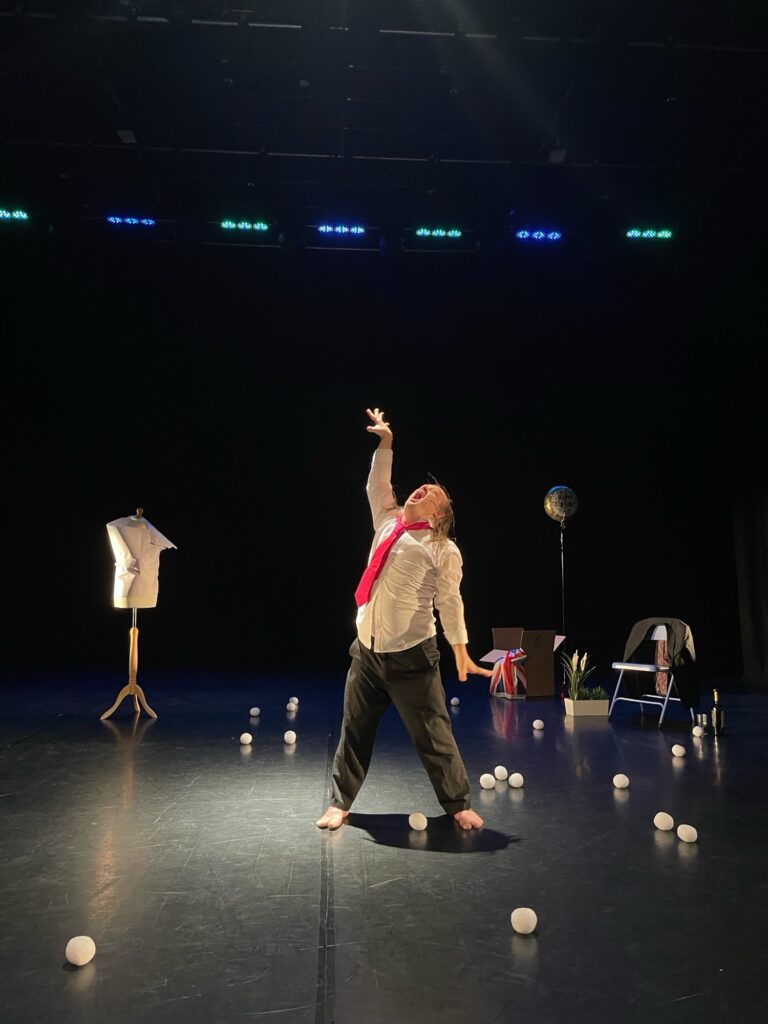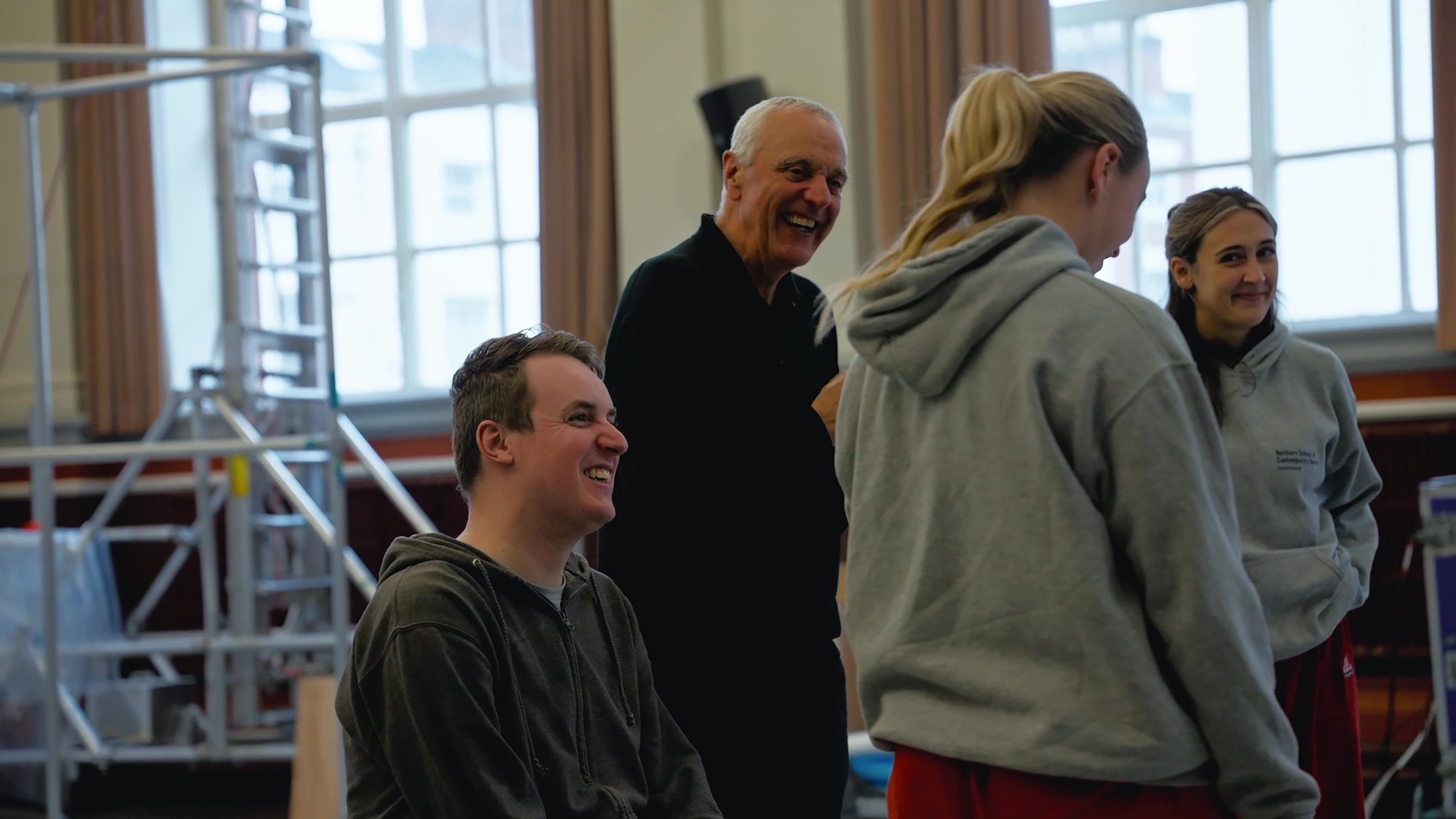Words by Jodie Nunn.
“I feel like a choreographer now – I call myself a choreographer and this is what I want to do.”
Placing two disabled dance artists within a professional setting should not be as groundbreaking as it appears but it is, and that truly is testament to an industry in lag. For years, the many strands of the dance sphere have failed to include the voices of all. In doing so, the braiding of creatives, movers, educators, producers and choreographers lacks integrity, missing many glistening strands in its inauthentic plait.
An extension of Critical Mass (2022), the Keep Moving Project (2025), led by FABRIC and the Dance Leaders Group (an independent network of dance professionals and leaders across the Midlands), commissioned and co-designed two artistic development residences for dance artists, Nick McKerrow (a company dancer from Anjali Dance Company) and Sander Verbeek (a disabled artist with Motionhouse). Grounded in the founding principles of trust, dialogue and flexibility, FABRIC co-produced this inclusive opportunity (partnering with the two companies) rooted in the desire to test different models of working that could support more disabled creatives to gain professional development and eventually long-term employment. In a broader sense, the project’s long-term aims look to a more accessible and inclusive dance sphere whereby artists of all bodies and minds are valued and have equitable access to employment and progression pathways. In its very inception, Keep Moving exists to defy limits: beginning to open doors for dance artists with disabilities, an overwhelmingly underrepresented faction of our beloved arts community, and reflectively, the wider world we live in*.
The first residency offered Nick McKerrow the opportunity to work in close collaboration with renowned choreographer Gary Clarke, and artistic & access advisor Rachel Liggitt. Following Nick’s Developing Your Creative Practice (DYCP) Award that explored his transition from performer to choreographer, this studio-based opportunity focused on the creation of Nick’s first autobiographical solo work. The second residency supported Sander Verbeek to shadow Motionhouse’s Artistic Director Kevin Finnan and Associate Director Daniel Massarella throughout the creation of Hidden, the company’s latest touring production. Sander gained inside knowledge of how the different aspects of a touring production come together, following how Kevin works with a team of artistic collaborators across multiple forms, and how he shapes the production as it moves from rehearsal to premiere.

The conclusion of the two residencies bore the publication of a documentary and complementary evaluation report, and what rang most unequivocally was the interwoven notions of leadership, limits, and legacy. Eager to learn more, I spoke to Nick about his experience, spiralling these very notions of defying limits, defining leadership, and dancing legacy; we began with a three-word summary of the project…
Interesting
Fabulous
Collaborative
The limits placed upon dance artists with disabilities is made abundantly clear in the Keep Moving documentary. Despite all good intentions, it is made apparent early in the project that seemingly simple and mundane tasks were innocently overlooked; in Sander’s case, this looked like ginormous wooden doors, too heavy to prop open and navigate a wheelchair though alone. These everyday obstacles highlight the systemic barriers to authentic accessibility and inclusion for disabled artists in the sector, prior to arriving in the studio space. In light of this, I asked Nick about the most challenging part of the process of creating his auto-biographical solo…
The time it takes to develop the solo material, remaining patient as I am eager to show it to everyone and perform it!
It was great to bring my own ideas into the room and explore it.
I learnt a lot about the different stages of making a solo work, from using my life story as a starting point to developing choreography.
The shift in sense of self in both participants is palpable: leaders in their respective creative endeavours. The report showed notable changes for both the artists and the partnering organisations; artists left the programme with a clearer sense of their own artistic voice and value…experiences fuelled a desire to share learning with other and advocate for better access in dance education and beyond. Spiralling a new notion of leadership, the project seemed to embody a distinct shift in how all viewed their roles in assembling a palette for authentic accessibility, representation, and inclusion in dance. In what one can only imagine to be a battle-some endeavour, the studio space was cathartically laid clear for both Nick and Sander; a blank canvas for exploration – etching, scraping, curating an identity beyond that of disability.
I feel like a choreographer now – I call myself a choreographer and this is what I want to do.
Further to the authentic development of the participating individual’s own artistic voice and value, the report commented on the observed, resultant momentum for change; the project seemingly caused other producers to look sidewards, further highlighting the need for systemic reform. The report pulls attention to this, stating that the project was a test of possibility – a real-world experiment in what inclusive, equitable artist development could look like when done well. It showed that the potential is there. The talent is there. The hunger is there. Now, the sector needs to respond – with commitment, resources, and courage. Given the above, I asked Nick of his hopes for the future of the industry. And I think there is no better way to encapsulate the legacy of Keep Moving Project than his final remarks:
I hope more people like me, with Down’s Syndrome get to make their own dance work and perform it, to show the world what we can do given the right team and time.
To read more about the Keep Moving Project and support the work of Fabric, head to Fabric’s website where you will find lots more information about the project, Nick, Sander, and what’s next for Keep Moving, click here
Click here to view the complete suite of documentaries (Overall Documentary; Motionhouse & Sander; Anjali & Nick)
* “Arts Council England’s Diversity Report highlights that disability representation in dance employment is low compared to other creative arts, and significantly behind the general UK population of 24%.”
[Header image description: Sander Verbeek is pictured smiling alongside colleagues of Motionhouse in what appears to be a light and joyful company discussion.]
We have paraphrased from the project’s evaluation report throughout this article. Read the report in full.
